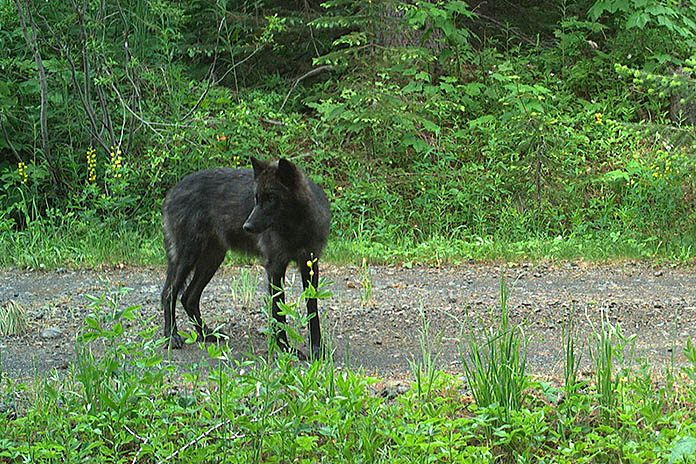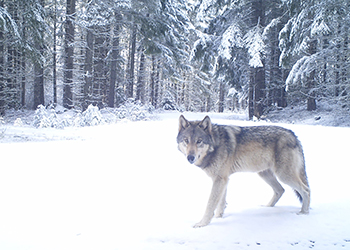
State wildlife biologists counted 173 wolves in Oregon this past winter, a 9.5 percent increase over last year’s count of 158 according to the Oregon Wolf Conservation and Management 2020 Annual Report released today at odfw.com/wolves.
This annual count is based on verified wolf evidence (like visual observations, tracks, and remote camera photographs) and is considered the minimum known wolf count, not an estimate of how many wolves are in Oregon. The actual number of wolves in Oregon is likely higher, as not all individuals present in the state are located during the winter count.
A total of 22 packs were documented during the count. (A pack is defined as four or more wolves traveling together in winter.) Of those packs, 17 reproduced and had at least two adults and two pups that survived through the end of 2020, making them “breeding pairs.” Seven other groups of 2-3 wolves were also identified.

While no new packs formed in western Oregon, the total number of wolves in the region increased by 29 percent (from 17 to 22 wolves) over the 2019 count. Eight collared wolves dispersed from their packs with four dispersing to other locations in Oregon, two to Idaho, one to California, and one wolf left California and became resident in Oregon.
“While northeast Oregon continues to host majority of state’s wolf population, dispersal to other parts of Oregon and adjacent states continues,” said Roblyn Brown, Oregon Department of Fish & Wildlife wolf coordinator.
A total of 21 wolves were captured and radio-collared during 2020, up from 14 last year. Four of those were thanks to licensed trappers promptly reporting their incidental capture of a wolf; ODFW was able to radio collar and safely release those four wolves from foothold traps.
Wolf mortalities
Nine wolf mortalities were documented during 2020, including two young wolves that died from natural causes (a Wenaha pup and Indigo yearling).
Seven wolf mortalities were human caused. One wolf was killed when hit by a vehicle on I-84, another was apparently killed when hit by a boat while swimming across the Snake River.
One was taken lawfully under the “caught in the act” rule which allows livestock producers to shoot a wolf found in the act of biting, wounding, killing or chasing livestock. (As of January 4, 2021 “caught in the act” is legal statewide but rules differ for East and West Zones which are in different phases of wolf management; livestock producers should visit ODFW’s webpage to find out more.)
Four wolves were killed illegally in 2020. Three deaths are still under investigation, and OSP is actively seeking more information. The breeding male of the Ruckel Ridge Pack was shot in Umatilla County in May. The breeding male of the Cornucopia Pack was shot in September in Baker County. A subadult wolf, believed to be from the Pine Creek Pack, was shot in October in Baker County.
Finally, a livestock owner shot a wolf mistaken for a coyote. The owner was warned by Oregon State Police after self-reporting the incident to OSP.
“Hunters and livestock producers in areas of wolf activity really need to be careful and be able to tell the difference between wolves and coyotes,” said Brown. Review ODFW’s Coyote vs Wolf ID quiz for tips.
ODFW did not lethally control any wolves in response to chronic depredation in 2020.









